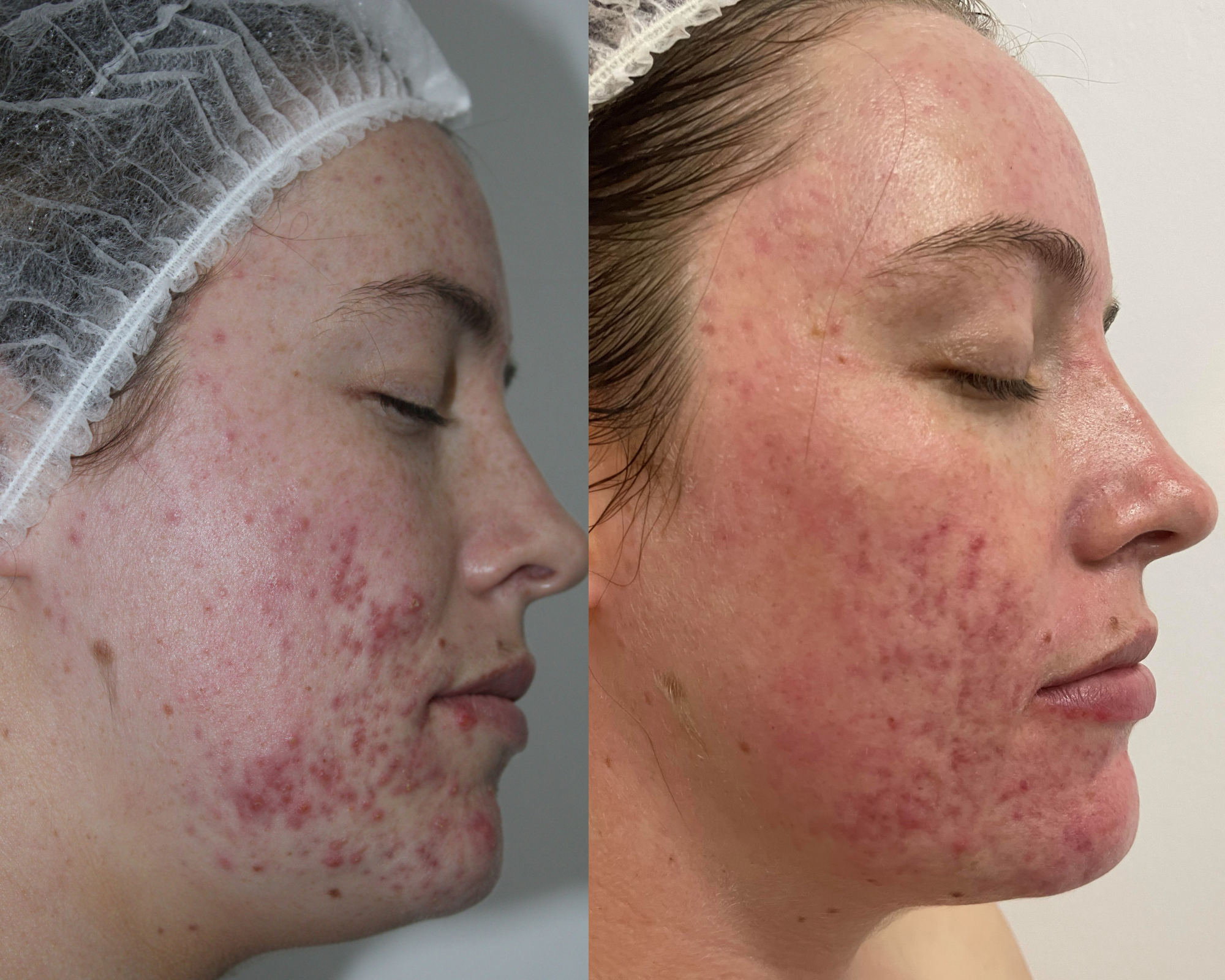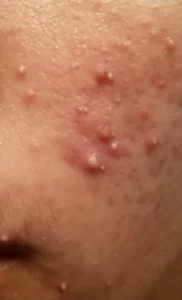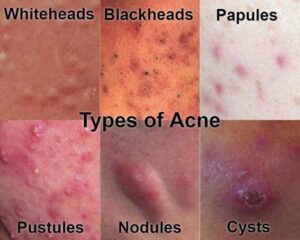
The occasional bump or breakout might not be a big deal to some. Persistent acne, on the other hand, can be a frustrating problem, affecting your selfesteem and confidence. Your feelings about acne may have everything to do with the extent of your skin problem,
which can range from mild to severe.
Technically known as retention hyperkeratosis, acne is a chronic inflammatory condition of the pilosebaceous (hair follicle and its sebaceous gland). It is characterised by comedos (blackheads), macules (discoloured spots), papules (inflammatory elevation of skin not containing pus), pustules, cysts and scars.
TERMINOLOGY
COMEDONES
A comedo, or basic acne lesion, is a hair follicle that has become clogged with oil and dead skin cells. Comedones (the plural of comedo) can develop into bumps called whiteheads and blackheads. Products that may trigger comedones are called ‘comedogenic’. Makeup labelled ‘non-comedogenic’ is less likely to clog pores and contribute to acne.
THE DIFFERENT TYPES
NON-INFLAMMATORY ACNE
The term ‘non-inflammatory acne’ refers to mild, surface-level blemishes. As the name suggests, the key characteristic of non-inflammatory acne is an absence of inflammation, swelling, redness and tenderness in the skin surrounding the blemish. The underlying reason for the lack of swelling seen in non-inflammatory acne is that in this type of blemish, the pore remains intact rather than ruptured.
▪ Blackheads
Blackheads are comedones that are open at the surface of the skin. They are filled with excess oil and dead skin cells. It’s not dirt that causes the comedone to turn black. The black hue results from the irregular reflection of light coming from clogged hair follicles.

▪ Whiteheads
Comedones that stay closed at the surface of the skin are called whiteheads. This happens when oil and skin cells prevent a clogged hair follicle from opening.

INFLAMMATORY ACNE
Inflammatory acne occurs when lesions become larger, deeper, red and tender. These more uncomfortable symptoms happen because bacteria have flourished inside the blemish. Eventually, the wall of the blocked pore breaks down and allows debris and bacteria to spread into the surrounding dermal tissue. This form is more likely to be trickier to kick. It’s not all bad news though! Understanding which type of inflammatory acne you’re experiencing is the first step to managing the skin issue.
▪ Papules
Papules are comedones that become inflamed, formingsmall red or pink bumps on the skin. This type of pimple may be sensitive to the touch. Picking can make the inflammation worse and may lead to scarring. Having many papules may indicate moderate to severe acne.
▪ Pustules Pustules are another kind of inflamed pimple. They resemble a whitehead with a red ring around the bump. The bump is typically filled with white or yellow pus. Avoid picking or squeezing pustules. Picking can cause scars or dark spots to develop on the skin.
▪ Nodules
Nodules are large, inflamed bumps that feel firm to the touch. They develop deep within the skin and are often painful. Nodules should be treated by a dermatologist since they can scar.
▪ Cysts
Cysts are large, pus-filled lesions that look like boils. Like nodules, cysts can be painful and should be treated by a dermatologist since they also can scar. People who develop nodules and cysts are usually considered to have a more severe form of acne.

OTHER TYPES
▪ Acne Conglobata
Acne conglobata is one of the most severe forms of acne. It involves many inflamed nodules that are connected under the skin to other nodules. It can affect the neck, chest, arms, and buttocks. It often leaves scars. This type of acne is more common in men and is sometimes caused by taking steroids or testosterone.

▪ Acne Mechanica
Acne mechanica is caused by heat, friction, and pressure against the skin, often the result of wearing sports gear such as a helmet or baseball cap. It is sometimes called”sports-induced acne” because it occurs frequently in athletes. Preventive measures include wearing an absorbent material under sports equipment and showering immediately after activity.

TREATING DIFFERENT TYPES OF ACNE
DMK has several successful techniques developed for revising acne. They are based on a natural healing approach using various modalities and botanical chemistry to restore skin functionality. DMK is a very diverse skin revision system,
there is never one way to approach acne. The treatment approach will depend on the client and the degree of the acne that is diagnosed in-clinic with a DMK Skin Technician. You can expect your Skin Technician to provide a 12-week treatment program that works on treating the cause to eliminate the symptoms, with long-term results to prevent reoccurrence.
DMK’S ACNE FIGHTING HOME
PRESCRIPTIVES
▪ Acu-Klenz
A deep cleansing gel containing salicylic acid. Its deep penetrating and exfoliating action help to keep pores clean while drying up existing acne.
▪ Acu-Klear
This acne lotion helps to quickly alleviate and reduce existing acne and prevent future breakouts.
▪ Acu-Mist
To normalise the skin’s acid mantle, spray Acu-Mist onto a cotton pad and apply onto the breakout and most congested areas over the face, before applying Acu-Moist. Work into the skin together.
▪ Acu-Moist
A gentle rebalancing moisturiser designed to encourage the skin’s continued hydration and enhance P-acnes bacteria guard support.
▪ Acu-Therm
By creating a pseudo heat on the skin (a flushing action) this blemish gel dissolves sebum plugs relieving the pressure in congested areas and helping to eliminate acne.